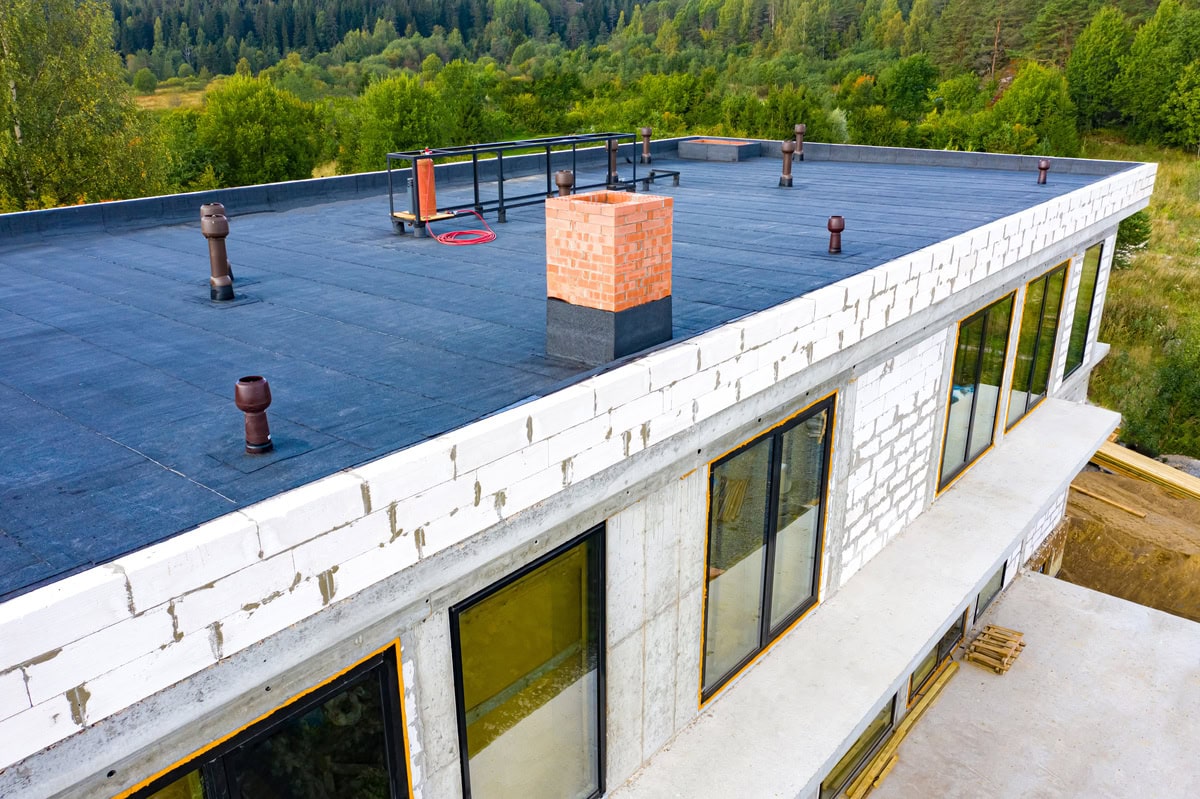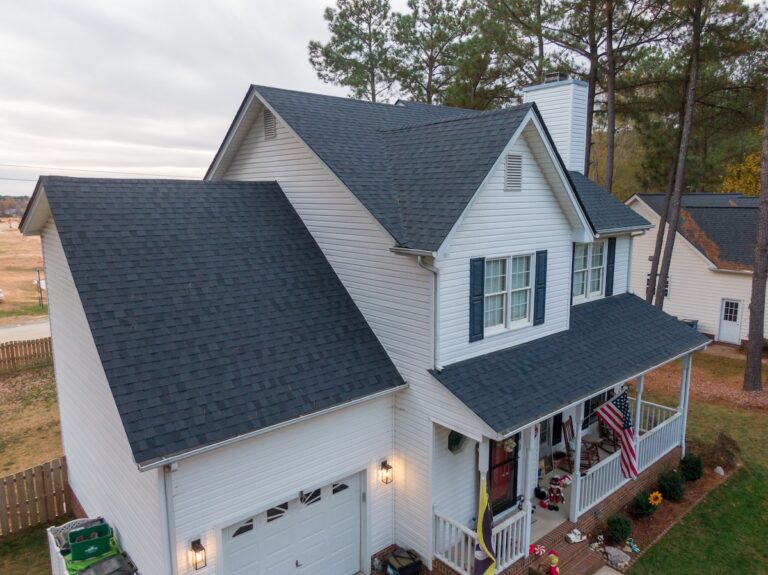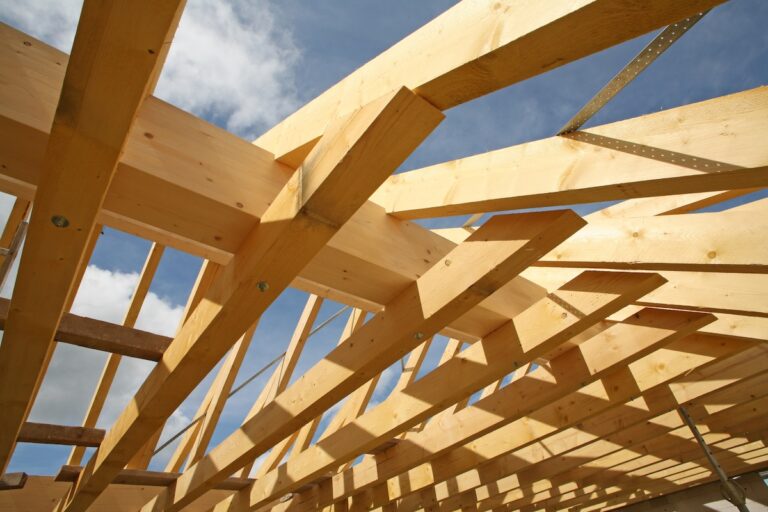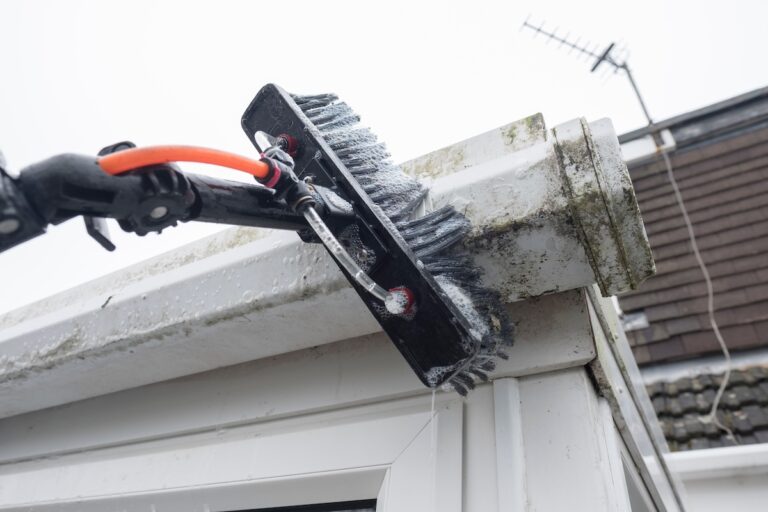Low slope roofing is a practical and efficient solution for homeowners seeking space-saving design, energy performance, and modern aesthetics. But what is low slope roofing, and how does it compare to other systems? Whether you’re planning a new build or maintaining your current roof, understanding the basics of low slope residential roofing can help you protect your investment.
- Balanced design: Combines modern appeal with effective water drainage
- Space optimization: Great for solar panels, HVAC systems, and usable rooftop areas
- Smart investment: Easier to maintain and more cost-efficient over time
In this guide, we’ll explore the top low slope solutions, including the best materials, signs of wear, and how to repair or maintain your roof with precision.
🤔 What Is Low Slope Roofing?
Low slope roofs have a pitch of 2:12 or less, meaning they rise no more than 2 inches vertically for every 12 inches of horizontal run. They aren’t truly flat but have just enough slope to allow water runoff while offering a more accessible, walkable surface.
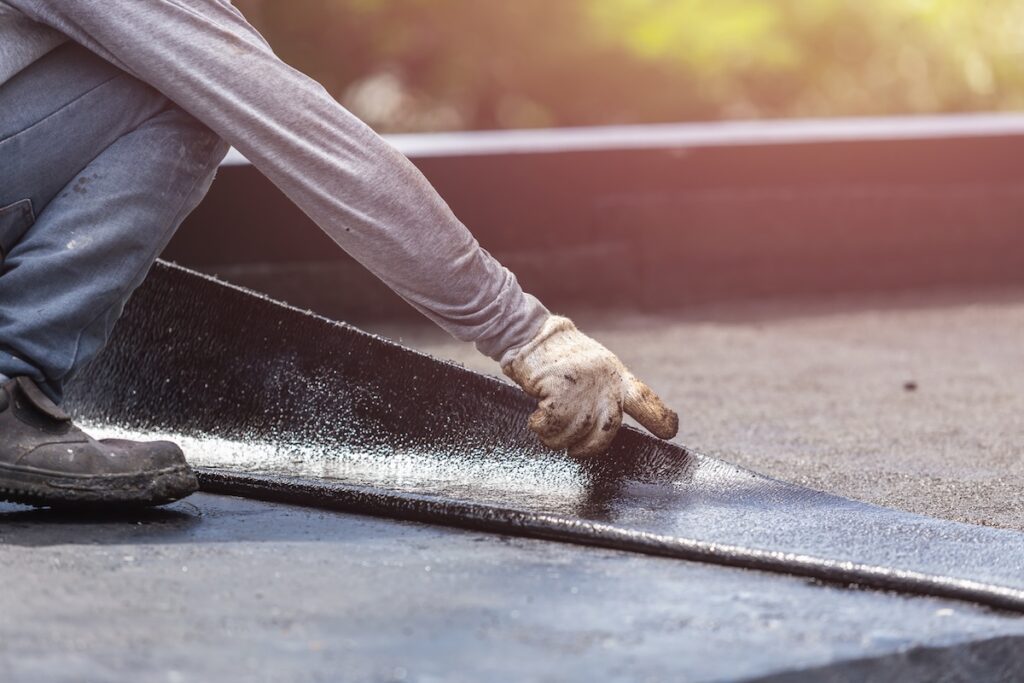
Types of Roof Slopes
Before choosing a roofing system, it’s helpful to understand how slope impacts drainage, style, and function.
Sloped Roofing
Most traditional homes feature steep sloped roofs that shed water and snow quickly. These are highly effective in rainy or snowy climates but can be more expensive due to added materials and labor.
Flat Roofing
Flat roofs are commonly found on commercial buildings and modern homes. While stylish, they require exacting drainage systems to prevent ponding water and are typically not ideal for areas with heavy precipitation.
Low Slope Roofing
Low slope roofs sit between steep slopes and flat roofing. They’re common on additions, porches, garage roofs, and modern residential designs. These systems allow for water runoff while providing added space and energy-efficient options.
✅ Benefits of Low Slope Residential Roofing
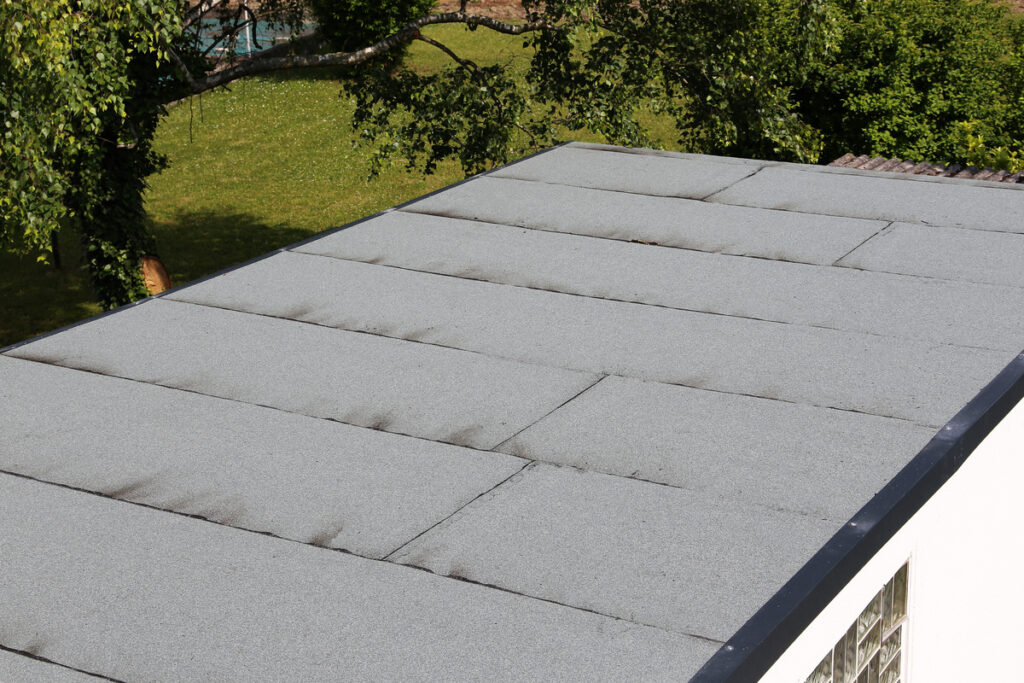
Why choose a low slope roof for your home? Here are the top advantages:
- Lower material and labor costs: Easier access and simpler framing reduce overall cost.
- Added usable space: Perfect for solar panels, rooftop gardens, or HVAC units.
- Improved safety: Walkable surfaces make repairs and inspections safer.
- Energy efficiency: Reflective coatings and insulation keep energy bills down.
- Modern design appeal: Fits well with sleek, minimalist architectural styles.
⭐️ Top Low Slope Roofing Materials in 2025
The right material plays a major role in roof performance and lifespan. In 2025, homeowners have access to improved products with better durability and weather resistance.
| Material | Description | Estimated Cost (2025) |
| Built-Up Roofing (BUR) | Multiple layers of asphalt and felt topped with gravel; long-lasting and affordable | $4.50–$6.50 per sq. ft. installed |
| Single-Ply Membranes | EPDM, TPO, and PVC sheets; lightweight and waterproof | $5.00–$9.00 per sq. ft. installed |
| Modified Bitumen | Reinforced asphalt sheets with flexibility in changing temps | $4.50–$7.50 per sq. ft. installed |
| Metal Roofing | Standing seam or corrugated panels; long-lasting and highly weather resistant | $8.00–$12.00 per sq. ft. installed |
1. Built-Up Roofing (BUR)
BUR remains a dependable and affordable system for low slope roofs. It includes multiple layers of asphalt-saturated felt, topped with protective gravel to deflect UV rays and weather damage.
- Durability: Lasts 20–30 years with proper maintenance
- Fire resistance: Excellent fire rating due to gravel layer
- Weight considerations: May require reinforcement for residential use
2. Single-Ply Membranes (EPDM, TPO, PVC)
Single-ply roofing is a leading choice for low slope residential roofing, offering versatility and waterproofing with minimal seams.
- Lightweight design: Reduces structural stress
- Easy repair: Damaged areas can be patched quickly
- Color options: White TPO and PVC improve solar reflectivity
3. Modified Bitumen
This hybrid material combines the layered approach of BUR with modern enhancements like polymer reinforcement.
- Flexible in cold climates: Expands and contracts without cracking
- Torch-down or self-adhering options: Multiple installation styles available
- Mid-range pricing: Balances cost and performance
4. Metal Roofing
Yes—metal works for low slope installations! Standing seam and corrugated metal panels can be installed on slopes as low as 1:12 with proper underlayment.
- Longevity: Often lasts 40+ years
- Minimal maintenance: Resists algae, mold, and UV damage
- Higher upfront cost: But provides long-term value
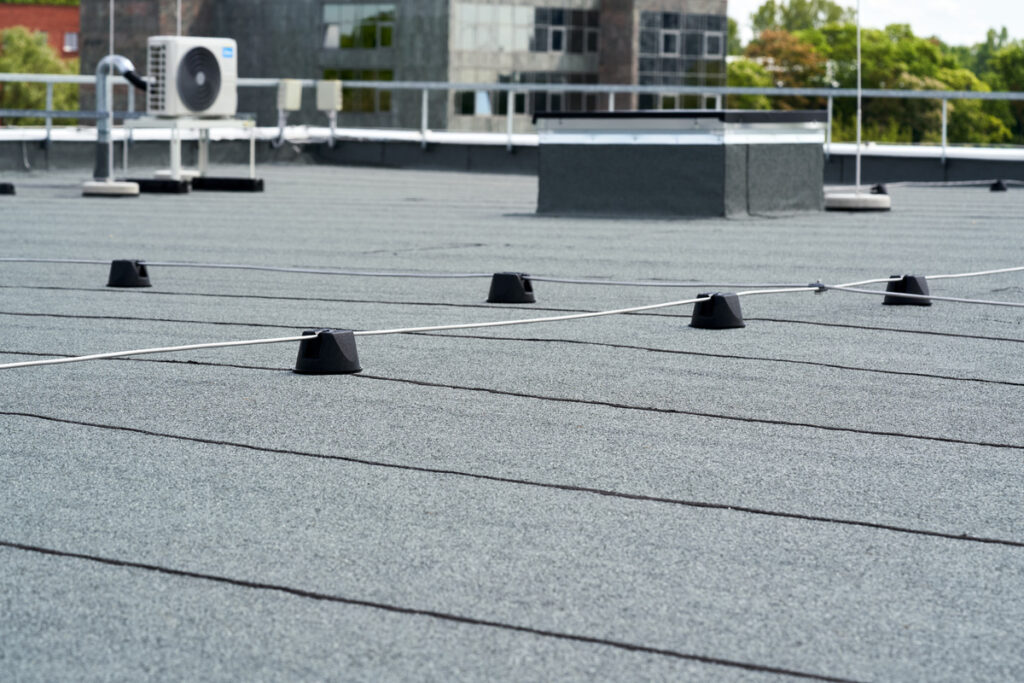
⚠️ Signs of Damage on a Low Slope Roof
Recognizing signs of roof distress early can prevent bigger issues later. Here’s what to watch for:
- Ponding Water: Indicates poor drainage and increases risk of leaks or sagging
- Cracks and Blisters: Appear when trapped air or moisture weakens the membrane
- Tears and Punctures: Often caused by foot traffic, falling branches, or sharp debris
- Granule Loss: On asphalt-based materials, exposing the surface to UV degradation
- Seam Separation: Gaps in seams allow water to creep in beneath the membrane
🛠️ Navigating Roof Repairs with Precision
Repairing low slope roofing requires accuracy and the right tools. While some patching may be DIY-friendly, larger repairs are best left to the pros.
Step 1: Clear and Inspect
Start by removing debris and identifying the source of the issue. Check seams, flashing, penetrations, and low points for visible damage.
Step 2: Minor Patching
For small tears or cracks, use compatible patching materials (like a membrane patch kit) and roofing adhesive. Clean the area thoroughly and ensure a full seal.
Step 3: Seal Key Areas
Use roofing caulk or sealant around vents, seams, chimneys, or fastener points to prevent future leaks. Pay special attention to areas where water tends to collect.
Step 4: Call in a Professional
If the issue covers a large area, affects multiple layers, or includes structural sagging, contact a certified roofing contractor. Professional repairs ensure proper drainage is restored and the roof system stays within warranty.
- Peace of mind: Pros can check for hidden water damage
- Product compatibility: Ensures repairs match your roofing system
- Long-term protection: Avoids future leaks and patch failures
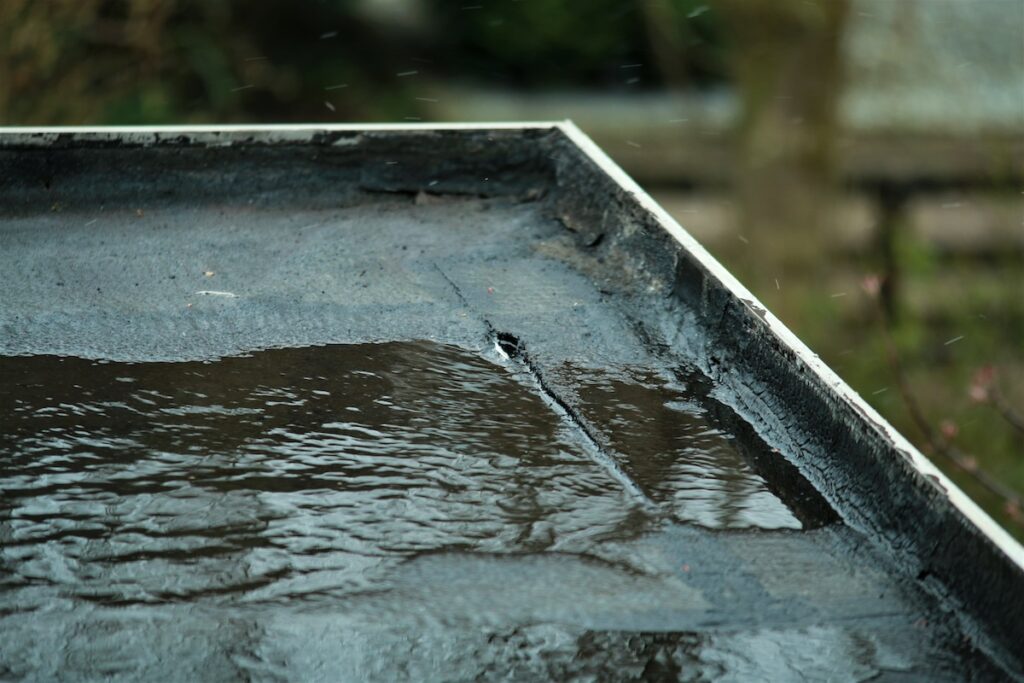
👍 Low Slope Roof Maintenance Tips
A proactive maintenance routine can dramatically extend your roof’s lifespan. Here are some key tasks for keeping your low slope solutions performing at their best:
- Biannual Inspections: Check your roof every spring and fall—or after major storms
- Debris Removal: Keep leaves, branches, and buildup off the surface
- Sealant Touch-Ups: Reapply caulk or sealant where needed to reinforce water barriers
- Trim Trees Nearby: Prevent overhanging limbs from damaging the surface
- Professional Checkups: Schedule regular inspections from a trusted roofing company
🤝 Why Homeowners Trust Us for Low Slope Roofing
Low slope roofs aren’t just for commercial buildings—they’re a smart, modern choice for residential homes too. With the right materials, installation, and maintenance plan, these roofs can perform beautifully for decades.
At Johnson Restoration, we help homeowners design and maintain long-lasting low slope residential roofing systems that match both form and function.
Contact Johnson Restoration today for expert advice, fast repair services, or a new low slope roof that’s built to last through 2025 and beyond.
